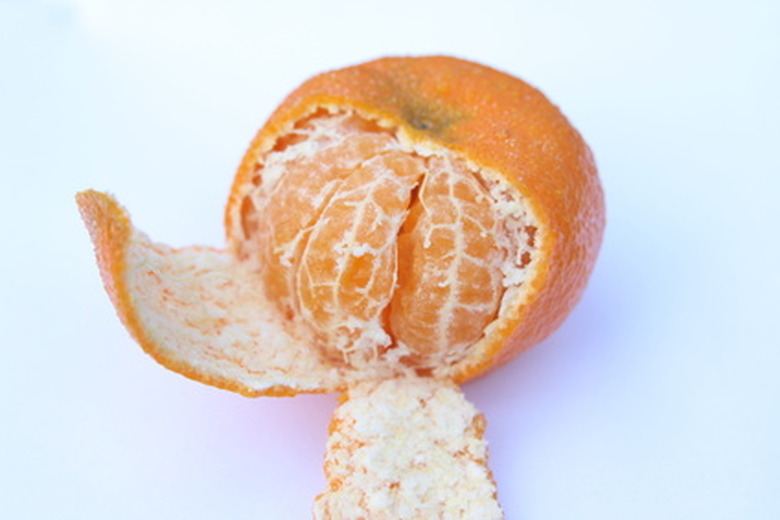How To Grow Satsuma Fruit Trees
Things Needed
- Shovel
- Ammonium nitrate
- Blankets or tarps, optional
- Pruning shears
Satsumas are sweet, juicy mandarin oranges that are low in acid and have few seeds. The trees are small, growing to a height of 4 to 6 feet. According to Texas A&M AgriLife extension, satsumas are cold tolerant to approximately 26 degrees F. They grow in the landscape in tropical and subtropical climates and are ideal for container growing in other areas.
Step 1
Plant satsumas in a well-drained location on the south or southeast side of the house for best protection from cold.
Step 2
Dig a hole large enough to hold the root ball.
Step 3
Remove the tree from its container and wash away the outer 1 inch of soil or growing medium from the root ball.
Step 4
Place the tree in the hole and fill the hole halfway. Water to settle the soil around the roots, then finish filling the hole, covering the root ball completely.
- Satsumas are sweet, juicy mandarin oranges that are low in acid and have few seeds.
- Remove the tree from its container and wash away the outer 1 inch of soil or growing medium from the root ball.
Step 5
Construct a watering ring from extra soil and soil from other locations. Build a ring of soil around the base of the tree approximately 3 feet in diameter, 6 inches wide and 4 or 5 inches tall. Remove all grass and weeds from inside the ring.
Step 6
Water the tree by filling the ring with water and allowing it to soak in. Water every two or three days during the first two weeks, then gradually increase the time between watering to seven to 10 days.
Step 7
Withhold fertilizer until the tree sprouts new growth, then apply 1/4 cup of ammonium sulfate every three months during the first year. In future years, use 1 cup of fertilizer per year of the trees age, split into three or four applications per year.
- Construct a watering ring from extra soil and soil from other locations.
- Withhold fertilizer until the tree sprouts new growth, then apply 1/4 cup of ammonium sulfate every three months during the first year.
Step 8
Protect satsumas from cold weather by banking soil against the exposed lower trunk during the winter. Remove the soil in the spring. Cover the tree with blankets or tarps during freezing weather.
Step 9
Harvest ripe fruit by cutting the stem close to the fruit with pruning shears.
